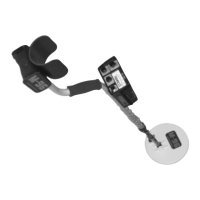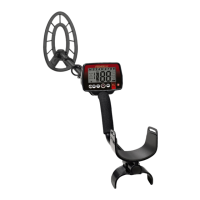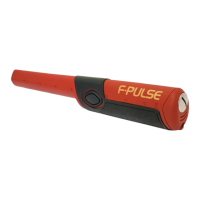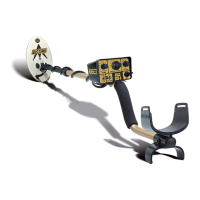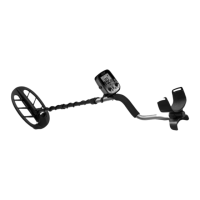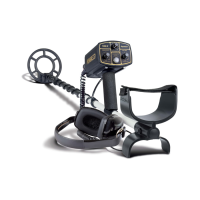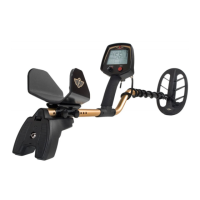14
A “false signal” occurs when something that shouldn’t,
sounds like a good target. Your 1225-X does an excellent job
of ignoring junk but it’s so sensitive to good targets that it can
be fooled by bad targets with similar electrical characteristics.
Large pieces of trash for example, or even some kind of bottle
caps and pull tabs. Small pieces of trash less than 2 inches from
the search coil will also sound good occasionally.
So what do you do about false signals? Well, 90% of them will
sound suspicious to you after you’ve had some experience and
you’ll just ignore them. They may be very faint or very abrupt
with static. Often when you go back over the same spot, a false
signal will simply disappear. Other false signals may be very loud
and sharp but most of these will disappear if the coil is speeded
up or raised slightly. Some shallow, large or irregular pieces of
junk however, will fool the 1225-X no matter what you do. Here’s
some other sources of false signals and what to do about them:
1. DETECTOR INTERFERENCE: Caused by nearby
metal detectors operating at the same (or close)
frequency.
SOLUTIONS: Move further away or reduce
sensitivity.
2. ELECTRICAL INTERFERENCE: Caused by Radio/TV
stations, power lines, etc.
SOLUTION: Move further away, lower the
sensitivity, reduce sweep speed. Wrap the search
coil cable tightly around the stem.
3. HIGHLY MINERALIZED SOIL: Usually causes
constant static or good target sounds. SOLUTIONS:
Lower the sensitivity, increase the discrimination.
Raise the search coil until false signals disappear
and sweep at that height.
4. WET SAND: Same as highly mineralized soil.
5. ELONGATED FERROUS OBJECTS: If you hear two
beeps very close together and can’t find either
one, you’re probably over a nail or some other
long iron object. But a very shallow coin or a coin
on edge will give the same response.
SOLUTIONS: In all cases, the target will be
FALSE SIGNALS
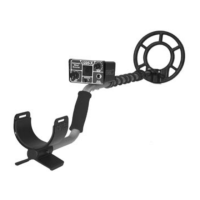
